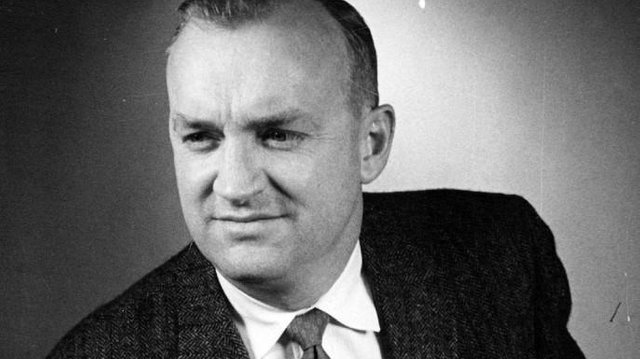How do you envision corporate hell? It probably involves fluorescent light, a micromanaging boss and a tiny, impersonal cubicle. But the office layout that’s come to represent the worst in work was actually designed to bring out the best in workers. When they debuted in the 1960s, cubicles were supposed to make offices breezier, less confined and more efficient. So why did their creator come to wish he’d never invented them?
It started in the 1960s, when designer Robert Propst headed up the research arm of furniture manufacturer Herman Miller. At the time, the company was known for triumphant mid-century design like Eames chairs and playful sofas modeled after marshmallows.
Propst wanted to understand every aspect of the modern office—and found inspiration in his own working style. He realized that he was happier, healthier and more productive when he had different surfaces on which to work. The research he commissioned from design experts and efficiency specialists showed that office spaces that were flexible and customized produced better work than a layout that depended on immovable, heavy desks.
That flew in the face of the typical office of the 1950s and 1960s. For years, workers had labored in large, open spaces filled with rows of metal or wooden desks. Only those with executive status had the coveted private offices away from the hustle and bustle of typewriters, cigarette smoke and telephone calls that characterized a busy open office—and as a result of that privacy, they were more productive than the common worker bee.
There had to be a better way. For Propst, the answer was in the “Action Office,” an office layout that relied on lightweight sitting and standing desks and filing systems. Acoustical panels helped insulate workers from the noise of telephone calls and typing.
But American offices didn’t exactly take to the new Action Office plan. The components were more geared to individual workers than to large companies that needed to accommodate large numbers of people, and they were hard to put together. And the concept of a completely customizable workspace didn’t sit well with executives who didn’t value the individuality of their workers. Instead, they often purchased the furniture for their own homes rather than placing them in offices. Action Office was beloved by designers—and dismissed by just about everyone else.
Faced with the failure of his first concept, Propst went back to the drawing board and created the Action Office II. The new design took his acoustical panel concept to the next level. The panels became miniature walls of multiple heights that separated each space into its own office without completely cutting a worker off from colleagues. Lightweight and easier to assemble, it made more sense to executives.
But companies didn’t use the Action Office II, and the many knockoffs it inspired, the way Propst intended. Instead of going for roomy desk spaces with different designs and walls of different heights, they opted for tiny, boxed-in desks instead. They ignored Propst’s vision of a flexible workspace and visual sightlines. Using Propst’s brainchild, cubicles were used to cram even more workers into offices. The office he had invented shrank and shrank until it became impersonal and crowded. The age of the cubicle farm had begun.
Source:http://www.history.com/news/why-the-inventor-of-the-cubicle-came-to-despise-his-own-creation 



Hi! I am a robot. I just upvoted you! I found similar content that readers might be interested in:
http://www.history.com/news/why-the-inventor-of-the-cubicle-came-to-despise-his-own-creation
Downvoting a post can decrease pending rewards and make it less visible. Common reasons:
Submit